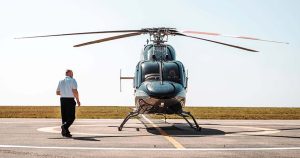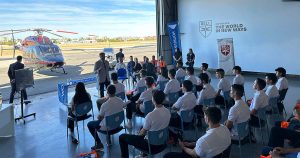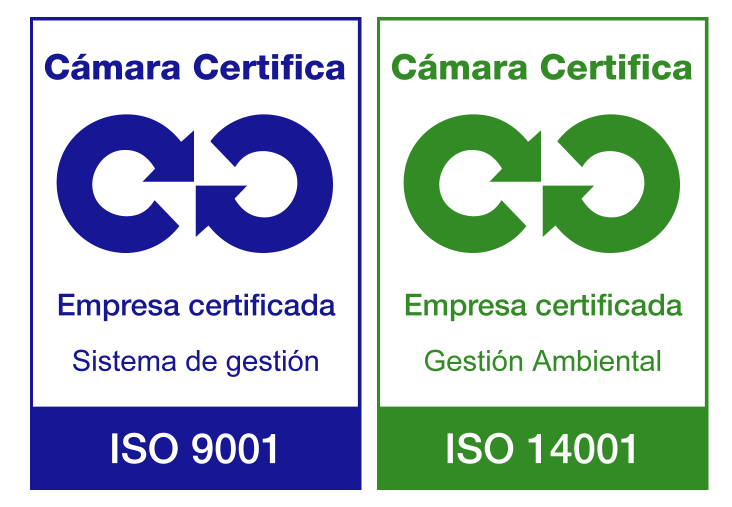For many people, the idea of becoming a pilot, either of helicopter or airplane, brings images of adventure and freedom, as well as doubts and uncertainty. Is it really that expensive? How many flight hours are needed? Is it a viable career path?
At World Aviation, we try to clarify this training process and give an answer to the most common questions asked by those who dream of flying. Therefore, in this article, we will explain the requirements, training phases and necessary skills from a realistic view so as to demystify it and clear up all doubts to those who are considering taking this exciting path.
What are the requirements for becoming a pilot?
The requirements to become either a helicopter or an airplane pilot, depend on the license type and the country where you intend to train. Nevertheless, the basic steps include:
- Minimum age and academic level: to obtain a private pilot licence, it is required to have completed secondary education and be 18 years old at the time of taking examinations. For commercial licences, as helicopter pilot or airline pilot, the minimum age is usually 21.
- Medical certification: becoming a pilot requires passing a rigorous medical examination that guarantees the applicant’s good physical and psychological condition. Health requirements vary depending on the type of license, but it generally includes tests for visual acuity, hearing, motor coordination, as well as a basic psychological assessment.
- English level: English is the official language in aviation. Therefore, a good level is necessary to allow a perfect communication with ground services and other aircrafts. The training process includes technical English classes so as the future pilots learn aeronautical terminology.

Demystifying the cost of training
It is true that a pilot’s career can be expensive, and that is why training cost is one of the most common concerns. Nevertheless, there are different ways to adjust students’ budgets according to the desired type of license.
The private pilot license (PPL) is the most affordable. As a non-commercial flight option, it is an excellent choice for those looking to experience and explore aviation in a recreational way.
For those interested in making a career, the commercial pilot licence (CPL) and the airline transport licence (ATPL) are essential. Although their cost is higher, there are grants and loans that make it possible to obtain them.
Funding and scholarship options: some academies, World Aviation among them, offer funding plans and payment options that make access to training much easier. In addition, grants and support programmes are available through aeronautical associations and industry entities which can significantly reduce the cost.
Training phases: From theory to practice
The pilot training process combines theoretical and practical instruction in a carefully structured progression that ensures that candidates acquire both technical knowledge and practical skills. These phases include:
- Theoretical training: students receive a solid instruction on fundamental subjects such as navigation, meteorology, flight procedures, and air regulations. This phase is key to ensure that future pilots understand all aspects of aviation and safety regulations.
- Simulator training: before performing real flights, students practice in advanced simulators that reproduce authentic flight conditions. This allows applicants to become familiar with the aircraft and its controls while practicing emergency procedures in a safe environment.
- Real flight under supervision: during this phase, students fly with certified instructors who guide them in basic and advanced maneuvers. These include take-offs and landings as well as hovering (in the case of helicopters). Supervised flights are crucial for future pilots to feel comfortable and safe in the air.
- Supervised solo flight: once students demonstrate competence and confidence in their skills, they are allowed to fly alone under indirect supervision. This is a very significant moment in their training as it allows them to experience responsibility and total control of the aircraft.
- Instrument flight (IFR): to obtain a commercial pilot licence, an instrument flight training (IFR) is compulsory. This training allows the pilot to fly under low visibility conditions, such as fog or rain, and prepares him/her for complex scenarios ensuring that he/she can operate safely in different climates.

Skills and competences: beyond the technical knowledge
Pilot training is much more than learning how to fly an aircraft. In addition to acquiring technical knowledge, pilots must develop personal skills essential to ensure the safety of their flights and a perfect response to emergency situations. The most important competences include:
- Decision making and stress management: pilots must make quick and accurate decisions, especially in critical situations. During the training, they are taught to assess risks and manage stress in high tension contexts.
- Effective communication: a good communication with air traffic control and other pilots is essential for flight safety. Pilots must be able to transmit and receive information in a clear and fast way, ensuring an optimal coordination on each flight.
- Adaptation and good contingencies resolution: pilots often face changes in weather, technical problems or unexpected adjustments to the flight path. The ability to adapt and react properly to these contingencies is a skill that is cultivated throughout the learning process.
Job prospects: A growing profession
In Spain, it is estimated that thousands of new pilots will be needed in the coming years due to the retirement of experienced professionals and a lack of generational replacement.
At World Aviation, applicants receive a superb quality training that puts them in a competitive position within the labour market, both nationally and internationally.
According to the Air and Emergency Works Association (Ataire), the employability rate in the helicopter and aviation sector is currently 100%, which means that those who complete their training have endless job opportunities. In addition, the increase in forest fires and the need for rescue services in remote areas has boosted the demand for helicopter pilots in the emergency sector.

Common myths about pilot training
To conclude, let us disprove some common myths that can discourage potential future pilots:
- It’s only for people with extraordinary skills: although becoming a pilot is a big challenge, the training program is designed in such a manner that anyone with determination and motivation can acquire the necessary skills.
- Perfect vision is required: it is true that vision is important, but obtaining a licence with corrective lenses is possible.
- It is an excessively expensive path: there are scholarships, grants and funding schemes that can make this career much more accessible than it seems.
Conclusion
Becoming a pilot takes time, dedication and a rigorous training, but it is a perfectly accessible path for those who dream of flying and are willing to strive in order to achieve that dream.
At World Aviation, we are committed to providing quality training that prepares future pilots to face the challenges of this exciting occupation. With a realistic approach and the right support, anyone with a passion for aviation can turn their dream of being a pilot into reality.





